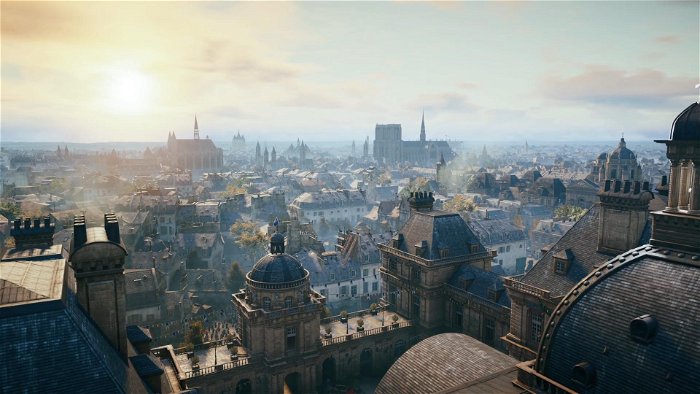International travel is expensive and tiring, but it’s (usually) well worth doing. Aside from the obvious benefits of expanding our point of view by interacting with other cultures, spending time in a different country also allows us to see and experience things—landscapes and architecture—that we don’t have at home. A large part of what makes travel worthwhile is inhabiting places that we usually see only through photos and film—walking the narrow streets of an old European city or exploring the natural environment of a completely different climate. And while they by no means replace the real thing, videogames are capable of replicating travel to a greater degree than any other media.
In many well-made games, players get the chance to feel as if they’re actually in the environments created by the developer. Though we can never go to places like The Legend of Zelda: Ocarina of Time’s Hyrule or Metal Gear Solid’s Shadow Moses complex, the time we spend exploring these fictional environments makes them feel as if they really exist. Because the interactivity of games like these allows players to move around and manipulate virtual spaces, a greater sense of physical space is created in them than would be if rendered in other media. Spending hours learning the layout of a videogame world often makes it feel as if we’ve actually visited these places.

Taking advantage of this effect by recreating real-world locations can result in something that approximates the experience of travelling to them. I may not have been to Paris, but running across a digital version of its 18
century rooftops in Assassin’s Creed Unity has helped me learn the general layout of the city and its landmarks. Likewise, while I’ve never visited Tokyo, games from the Yakuza series provide a sense of the atmosphere and urban architecture of the Japanese districts it models. Videogames that recreate real-world locations are a bit like travel shows or movies filmed in beautiful, international locales. Only, the ability to interact with these digital facsimiles can make them even more involving—and memorable—than simply watching film or TV.
When an array of settings is featured in a single game—as entries to series like Call of Duty and Uncharted so often do—the thrill is even greater. While the way these games go about their virtual globetrotting—blowing up historic architecture and shooting at the locals—isn’t exactly the best way to soak in the details of a foreign environment, the enjoyment that comes from simply experiencing them is undeniable. How else are we supposed to visit England, France, Germany, the United States, Czech Republic, India, and Russia in a single afternoon if not through a game like Modern Warfare 3? This kind of whirlwind tour across the world forms the same kind of attraction as what viewers find in spy movies, where we get to watch a jet-setting character like James Bond or Jason Bourne fly across the globe and hang out in a number of different cities within the length of a single film.

Videogames willing to fully lean into this approach to settings—ones that are excited about taking players on a tour of a given part of the world—are appealing because they (at least partially) translate the inherent excitement of travel into entertainment. It only makes sense for game creators to do this when appropriate. Aside from the inherent advantages of keeping an experience engaging through ever-changing scenery, developers aren’t hamstrung by the limitations of obtaining shooting permits for notoriously expensive cities. While modelling and detailing the streets of, say, an abandoned New York City may still require a tremendous amount of work, there’s no need to deal with the type of issues that come with blocking off inhabited streets for a film production. If significant development effort is already being funneled into crafting a variety of real-world environments, it only makes sense to give the player a chance to see more of the world while doing so.
The industry’s mainstream will likely continue to focus on impressive graphics and action-laden spectacle. And if that’s the case, players can at least hope that these games will take advantage of a few of the medium’s innate advantages to take us to places we may not otherwise get a chance to visit.




